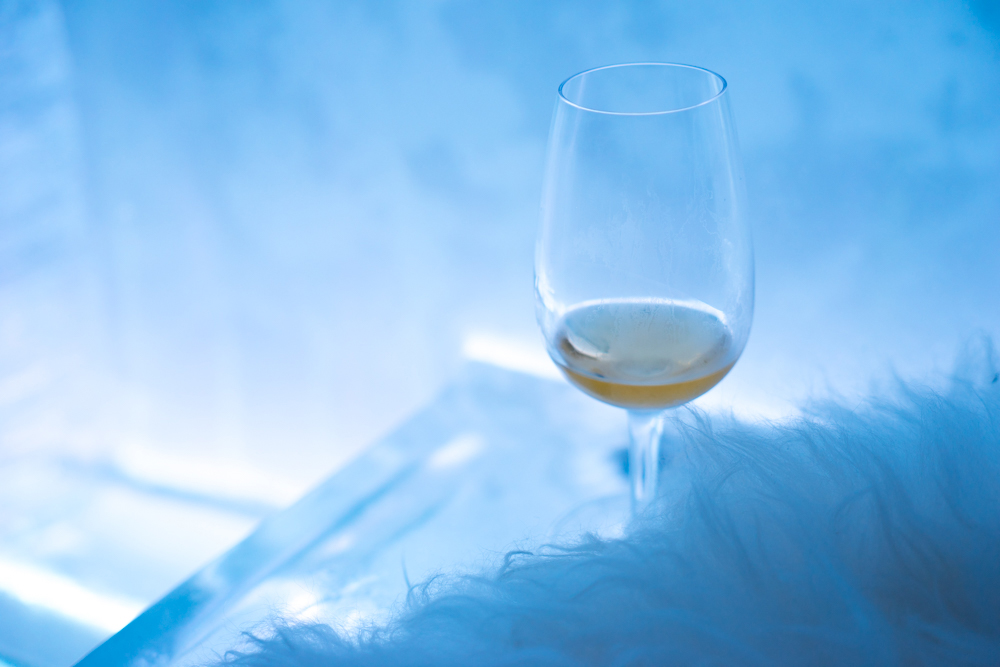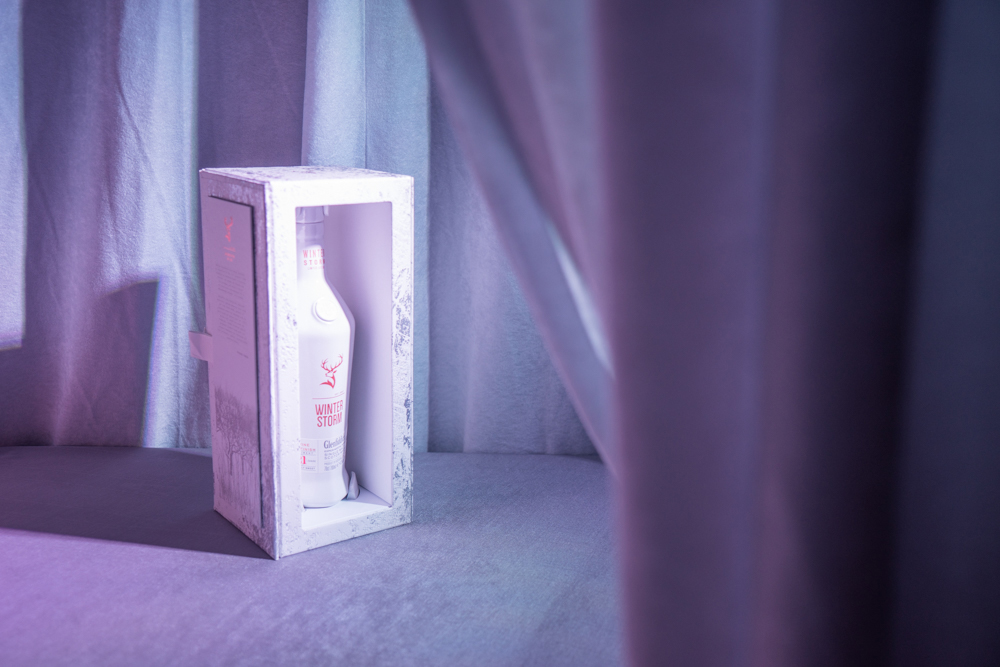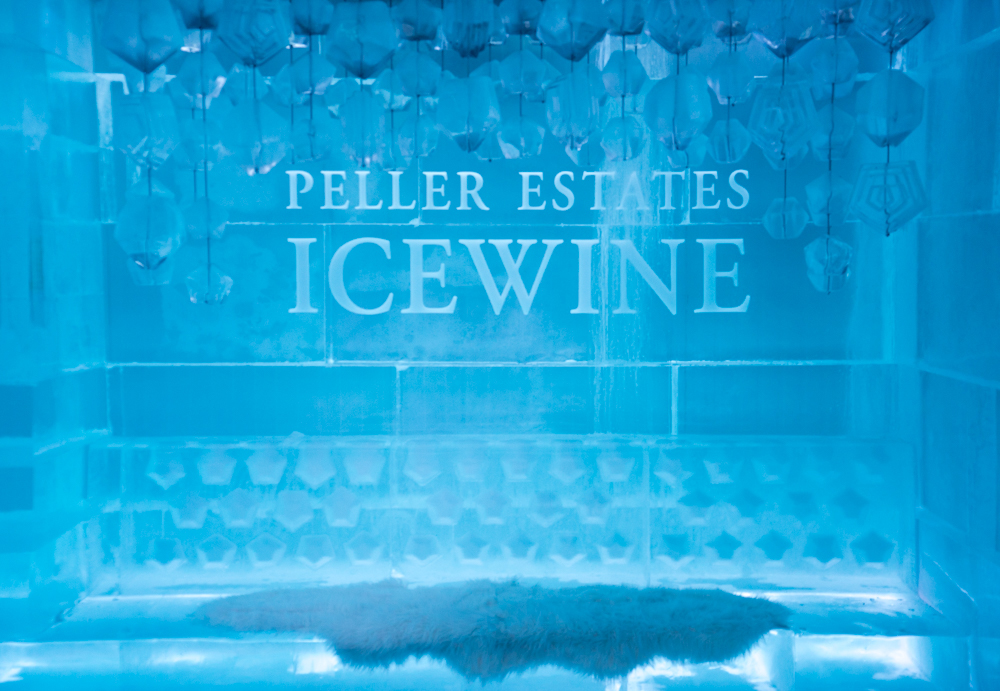Winter Storm, The Latest Experimental Release From Glenfiddich
The third in the brand’s Experimental Series, a 21-year-old single malt finished in Canadian Ice Wine casks

The world of Scotch whisky moves at a seemingly glacial pace: the liquid requires over a decade to reach maturation, and even more years for those special casks that are set aside for older releases. After all, 21-year-old truly means that the whisky is 21 years old. Despite the slow-moving nature of the whisky industry, Speyside’s Glenfiddich has proven to be one of the most innovative and forward thinking single malt producers since the beginning of the industry. In fact, Glenfiddich was the very first distillery to release its own scotch whisky, thereby defining the single malt category.

In recent years, Glenfiddich has continued to push the boundaries of the whisky category with its notable Experimental Series. The first in the series is the bright and hoppy Glenfiddich IPA cask finish, a non-age statement single malt finished in casks that were filled with an extra hoppy IPA created just for the project. The second in the series, the Glenfiddich XX, is a blend of 20 different barrels selected by the team of Glenfiddich brand ambassadors, making a sweet and decadent scotch with flavors of chocolate, toffee, and sweet cream. This fall, Glenfiddich has released the third in the series, Winter Storm, a truly experimental barreling that created not only a delicious scotch, but also an unlikely partnership spanning across the Atlantic Ocean.
The story of the third release starts with Glenfiddich Canadian brand ambassador Beth Havers, who has been with the team for six years. Havers, like so many Canadians, is very proud of her country and the things that come from it: maple syrup, hockey, poutine, and ice wine. Every few years, Havers would ask Malt Master Brian Kinsman if he had ever aged scotch in an ice wine barrel finish. He had not, nor had he ever even tasted an ice wine.

Kinsman heeded the advice in 2012, asking Havers to track down some ice wine casks. She cold called Craig McDonald, VP of winemaking at Peller Estates Winery, who loved the idea. Soon thereafter McDonald sent a few empty 9-year-old Vidal Ice Wine barrels to Scotland. For those who aren’t aware, ice wine is a rare dessert wine produced in cold climates such as Canada and Germany. Peller Estates Winery is located in Niagara-on-the-Lake, an award winning wine making region outside of Toronto that benefits warm summers where the temperature is warm enough to grow fine wine grapes and bitterly cold winters that consistently freeze to temperatures cold enough to make Ice Wine. One of Peller Estates’ four Ice Wines, the Oak Aged Vidal, spends nine months in a French Oak cask.
The collaboration was a surprise to makers on both sides of the ocean. “[It] went to another level when Brian contacted me directly and said he wanted to visit. That became an exchange of what he was doing and what I was doing,” says McDonald, “[Kinsman] is not just buying barrels and doing a finish with them, he’s really interested in my process and how those flavors came to be. Tasting the raw wine, tasting different iterations of the wine to understand his finished product. It was an in depth look at the influence of oak on our ice wine program and trying to correlate that with the trials he was doing and looking for nuance and finer details…it’s been part of an evolutionary conversation.”

Kinsman filled the casks with 21-year-old Scotch that had spent time in ex-bourbon casks, following his experience from working with other wine-finish casks that had been successful. “We had built up a knowledge of what finishes do to different types of casks. My gut feeling was that you need a whisky that has quite a lot of structure to it,” says Kinsman, “so it’s got a lot oak extraction, the natural tannin level is high—it’s solid—and therefore can stand up to the residual sugars that tend to ice wine.” After three to four months in the Ice Wine casks it was evident that the experiment had been successful. The resulting unique whisky carries a delicate nose of pear and tropical fruit such as lychee with flavors on the palate of honeyed toffee, subtle flavors of tropical fruits, a slight bees wax note, dried tobacco, and a viscous mouth feel that compliments the oaky tannins beautifully.
“[Kinsman] nailed it, because it’s so understated with its sweetness, and it is first and foremost a whisky,” says McDonald, “It’s a subtle accent, rather than an over dominance and a fusion of two products. Whereas he’s used this to subtly enhance the whiskey. It’s a fine line of how you do that, and it shows a deft hand in blending. As a winemaker when I use barrels like I do in Canada, you can overpower the wines very easily because the wines are so delicate, you need to show restraint with the oak. I liken that exactly to what Brian has done, he’s taken that subtlety and applied it to his whisky in his own way, to ultimately accent what he is making, which is a fine 21-year-old. It’s a brilliant whisky.” Which is quite the compliment.

Glenfiddich Winter Storm retails for $250, and is available in select markets.
Images by Emily Arden Wells, the cofounder of Gastronomista, a website dedicated to the Culture of Drink. Follow her at @gastronomista_.












